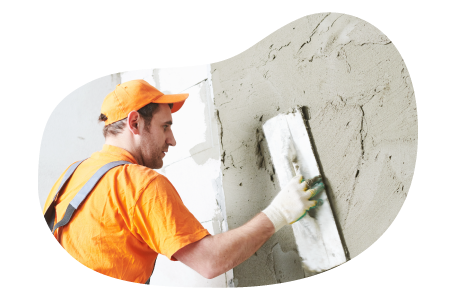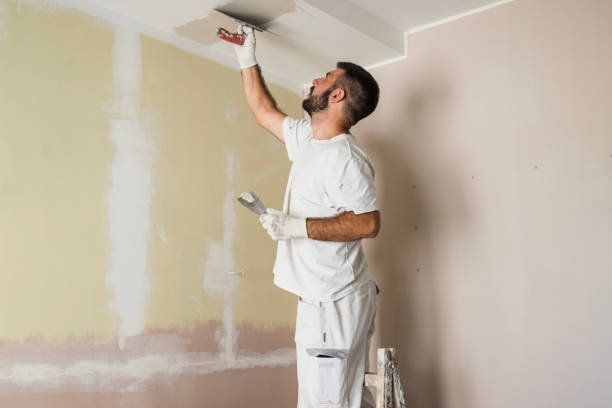Usual Errors to Avoid When Tackling a Plastering Project
Usual Errors to Avoid When Tackling a Plastering Project
Blog Article
Secret Tips and Equipment for Effective Plastering in your house Improvement Ventures
Accomplishing a remarkable plaster coating in your home improvement jobs calls for a mix of the right devices and tried and tested strategies. Recognizing the nuances of mixing plaster and using it in slim layers can considerably influence the last end result.
Vital Plastering Tools
The essential devices include a variety of implements made to assist in the plastering procedure effectively and effectively. Trick components consist of a hawk, which is a flat, square device utilized to hold the plaster while using it to surfaces.

In addition, a mixing pail is necessary for preparing plaster, making certain the right uniformity prior to application (Plastering). With each other, these necessary plastering tools allow both specialists and DIY enthusiasts to achieve high-grade results in their gluing tasks.
Surface Preparation Techniques
Appropriately preparing the surface prior to smudging is vital for guaranteeing bond and achieving a flawless surface. The primary step includes cleaning up the surface area to get rid of any kind of dirt, oil, or old paint that may hinder the plaster's capability to bond successfully. A comprehensive wash with an ideal cleaning solution is suggested, followed by permitting the surface area and rinsing to completely dry totally.
Following, assess the surface for any type of cracks or flaws. These need to be loaded with a suitable filler substance and permitted to heal according to the maker's instructions. For permeable surfaces, applying a primer is essential to develop an uniform texture and improve bond.
Furthermore, it is important to ensure that the surface area is secure and structurally noise. Any type of loosened products, such as flaking paint or damaged drywall, must be repaired or eliminated. Consider utilizing a scratch layer to boost grip. if working with masonry surface areas.
Combining Plaster Like a Pro

Making use of a clean mixing container, pour the water initially, after that progressively add the plaster powder while mixing continually - Plastering. This approach aids to avoid clumping and makes certain an also circulation of products. A mechanical mixer can be helpful, saving and supplying regular results time. Goal for a creamy, lump-free consistency that permits easy dispersing however is thick enough to hold its form without running.
Once combined, allow the plaster to rest for a few mins to enable the gypsum crystals to hydrate fully. This pause enhances workability and decreases the risk see this of breaking during application. By following these actions, you can mix plaster like a professional, setting the foundation for a successful smudging job in your house enhancement undertakings.
Application Methods for Smooth Finishes
With the plaster mixture prepared to the suitable uniformity, the following action involves selecting ideal application methods to achieve a smooth coating. The selection of application tools significantly affects the final look of the plastered surface area. For ideal results, a stainless-steel trowel is typically advised. This tool allows for a fine, also distribution of plaster throughout the surface while lessening trowel marks - Plastering.
Begin by using a charitable amount of plaster to the surface area making use of my response the trowel, ensuring it sticks well. Utilize a systematic strategy, functioning from the lower upward. When the first layer is used, utilize a sweeping motion to smooth the surface area, using even stress. In locations that call for more thorough focus, consider utilizing a float, which can assist remove any kind of flaws and produce an uniform structure.
For the last touches, a damp sponge can be utilized to improve the surface area even more. Gently haze the plaster with water and gently rub the surface to attain a refined effect. Constantly keep in mind to operate in small sections to maintain control over the application procedure, making sure a smooth, professional finish throughout your plastering project.
Usual Blunders to Avoid
When embarking on a gluing task, preventing common blunders is important for accomplishing a flawless coating. Guarantee that all dust, oil, and loose products are gotten rid of prior to applying plaster.
Another usual blunder is applying plaster too thickly. Thick layers can split as they dry out, endangering the honesty of the coating. Rather, choose multiple thin layers, allowing each coat to completely dry completely before applying the following.
Additionally, poor mixing methods can lead to irregular structure and workability. Constantly comply with the maker's guidelines for mixing ratios and extensively mix the plaster to achieve an uniform consistency.

Timing likewise plays an essential duty; plaster must be applied while the substratum is wet to boost bond. High-grade trowels and drifts can make a considerable difference in achieving a smooth finish.
Verdict
Effective smudging requires view it an extensive understanding of vital tools and methods. Proficiency of these components not just contributes to the aesthetic charm of an area yet additionally guarantees resilience and long life in gluing tasks, making them integral to successful home renovation ventures.
A float is another important tool, which aids in leveling the plaster and attaining an uniform surface.

By adhering to these actions, you can blend plaster like a pro, setting the structure for an effective smudging project in your home enhancement undertakings.
Lightly haze the plaster with water and carefully massage the surface area to attain a sleek impact.
Report this page